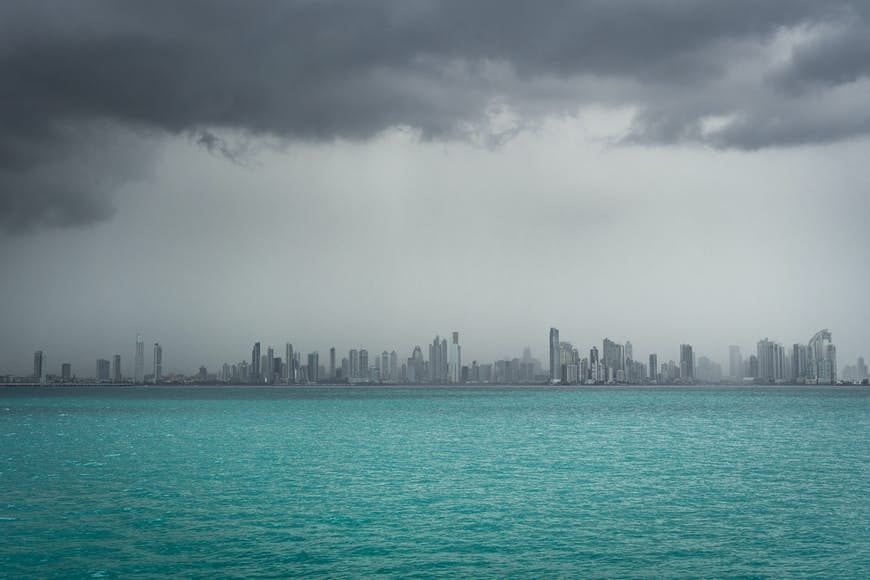Panama isn’t always expensive to visit. Traveling here is somewhat cheaper than traveling in Europe, Canada or the United States but somewhat pricier than Guatemala, Honduras or El Salvador.
It’s not the most expensive country in Central America – that prize goes to Costa Rica, closely followed by Belize – but thrifty travelers will need to plan carefully and sacrifice a few home comforts to keep costs to a minimum.
Fortunately, there are plenty of ways to save on food, lodgings, transport and excursions. The beaches are free and there’s no shortage of outdoor activities at Panama’s extensive and affordable national park system.
Here are our top tips for making your Panama adventure bueno, bonito y barato (good, nice and cheap).
Visit during the wet season
The wet season runs from May to November in Panama. Hotel rates can drop 10–30% during this period, but you will have to contend with bursts of torrential rain. Most downpours are quite brief, erupting in the afternoon and clearing an hour or two later, but several days of continuous downpours are not unknown. Certain activities, such as birdwatching and white water rafting, are much better in the rainy season.
Bocas del Toro has a highly changeable microclimate; the province is frequently wet when the rest of the country is dry, and sometimes vice versa. International flights to Panama are usually cheapest towards the end of the wet season, September to November.
If you only intend to visit western Panama, consider flying into Costa Rica
Many of Panama’s best attractions lay in the western provinces of Chiriquí and Bocas del Toro. If you don’t intend to travel beyond these areas, it’s sometimes (but not always) more economical to fly to San José in Costa Rica and then travel overland to Panama.
The direct bus from San José to the international border at Paso Canoas is an hour or so longer than the bus from Panama City to David (the second-largest city in Panama). You’ll have to submit to immigration formalities, which can be time-consuming.
The journey to Chiriquí is quicker and cheaper if you use intercity buses rather than international ones like Ticabus, which typically means longer commutes, higher prices and doesn’t stop at David.
Take the bus to and from Tocumen…
Click Here to Read the Full Original Article at Stories – Lonely Planet…
